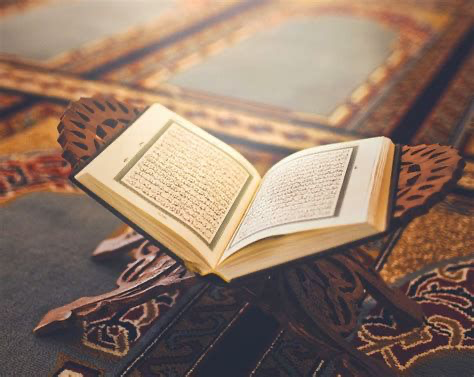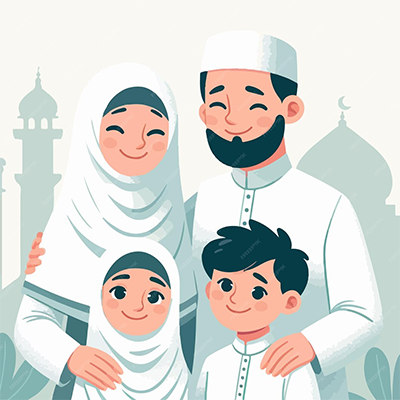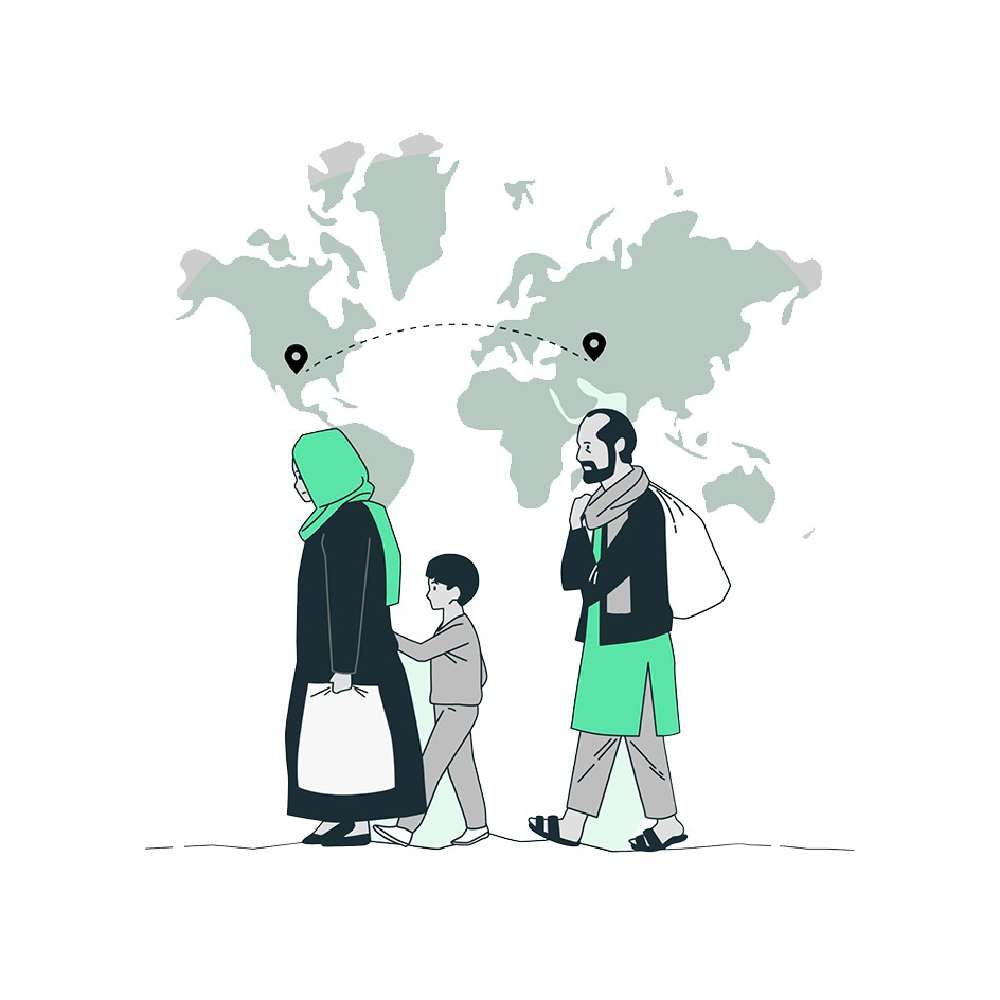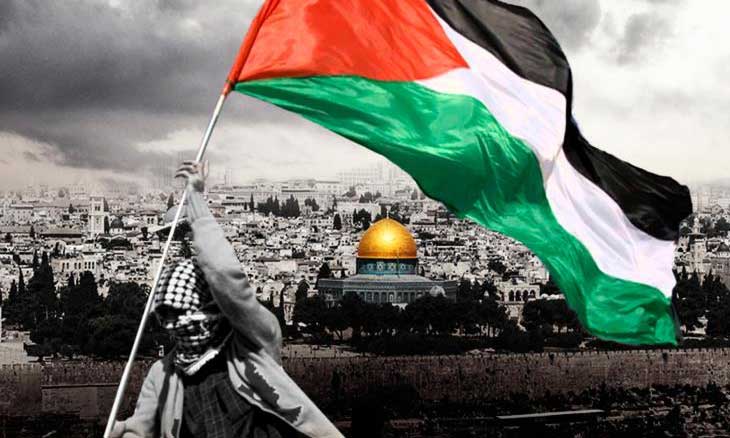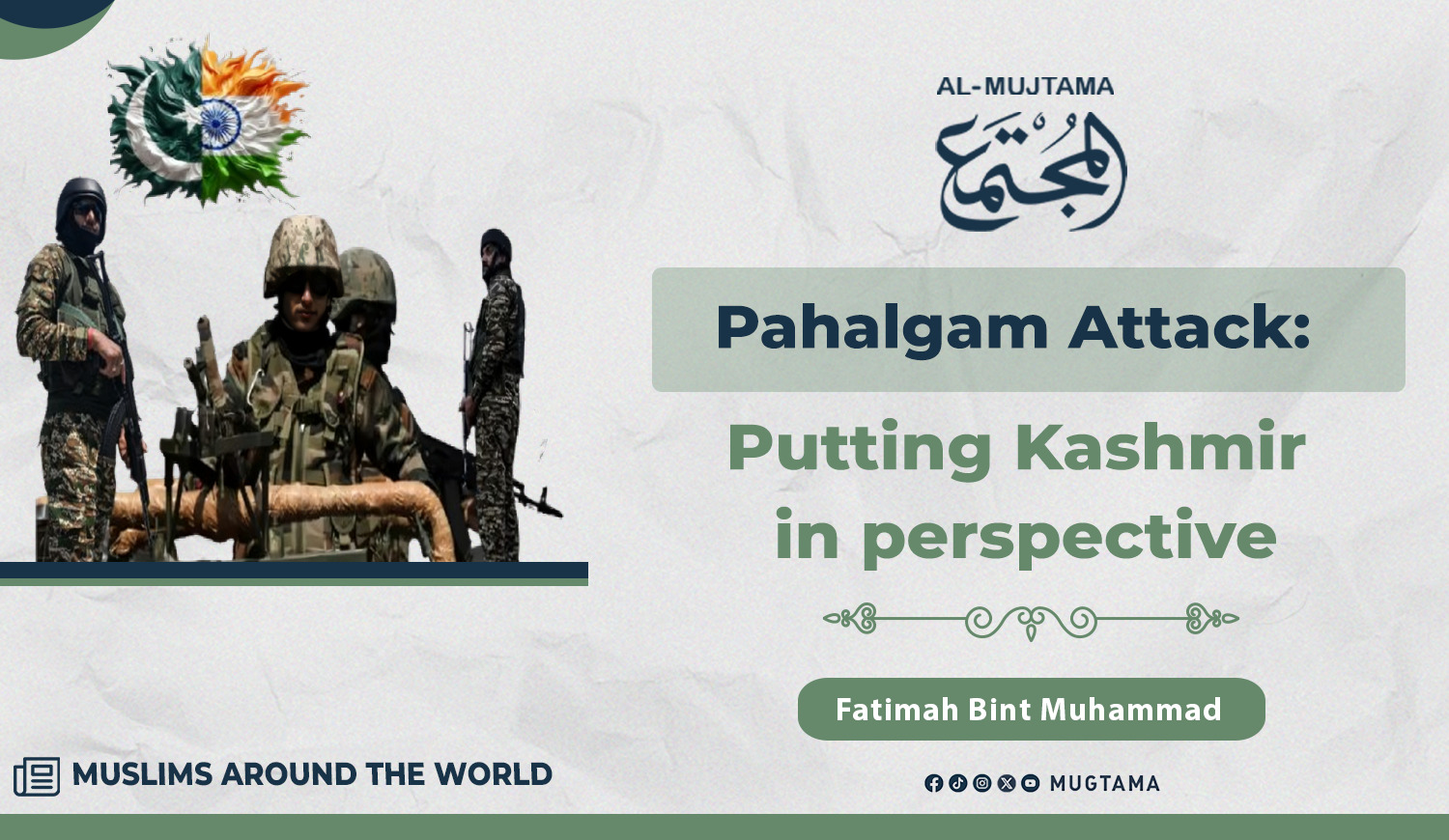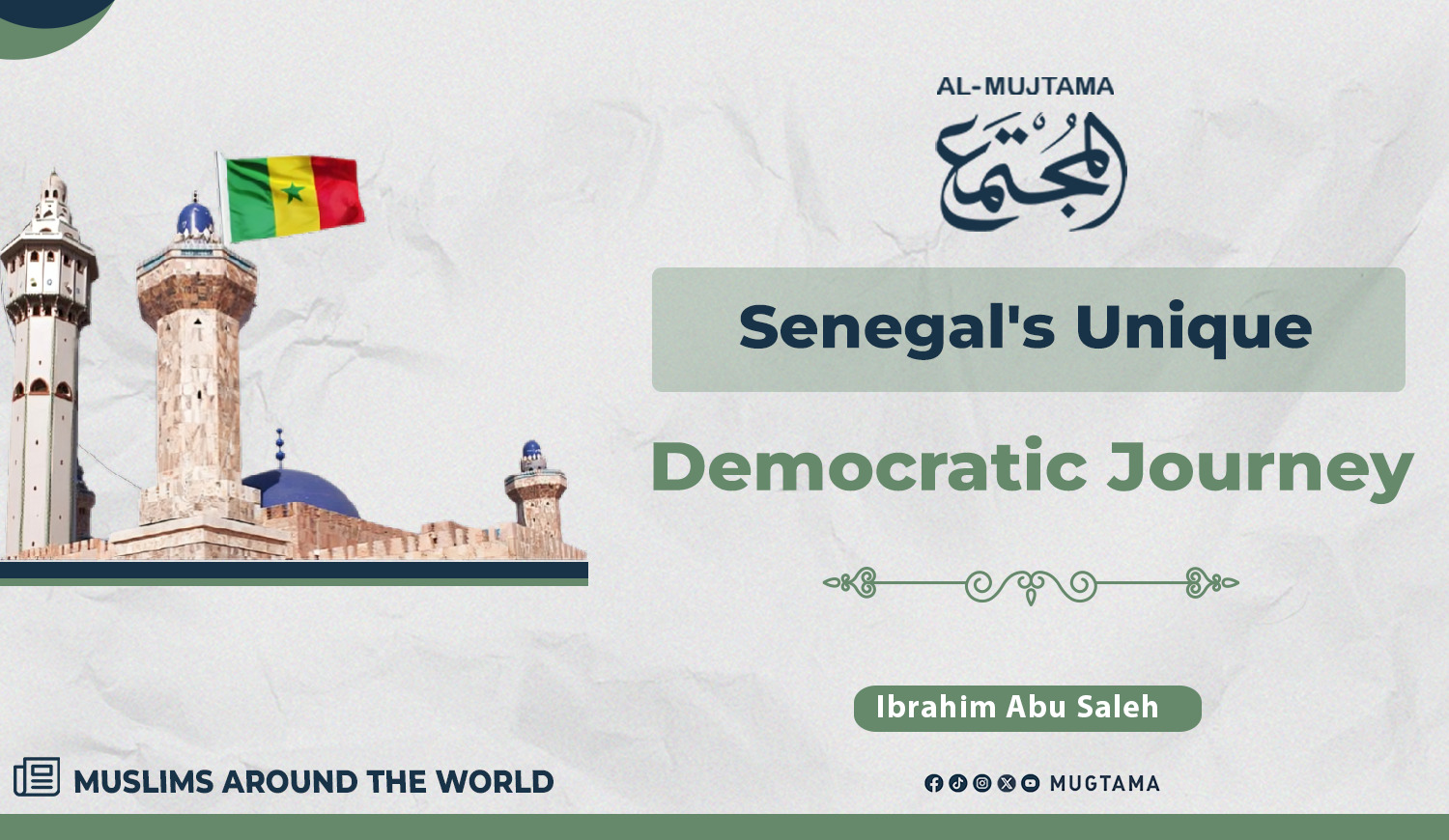Echoes of History, Hopes for Tomorrow
Islam in Vietnam: A Deep-Rooted Past and a Promising Future
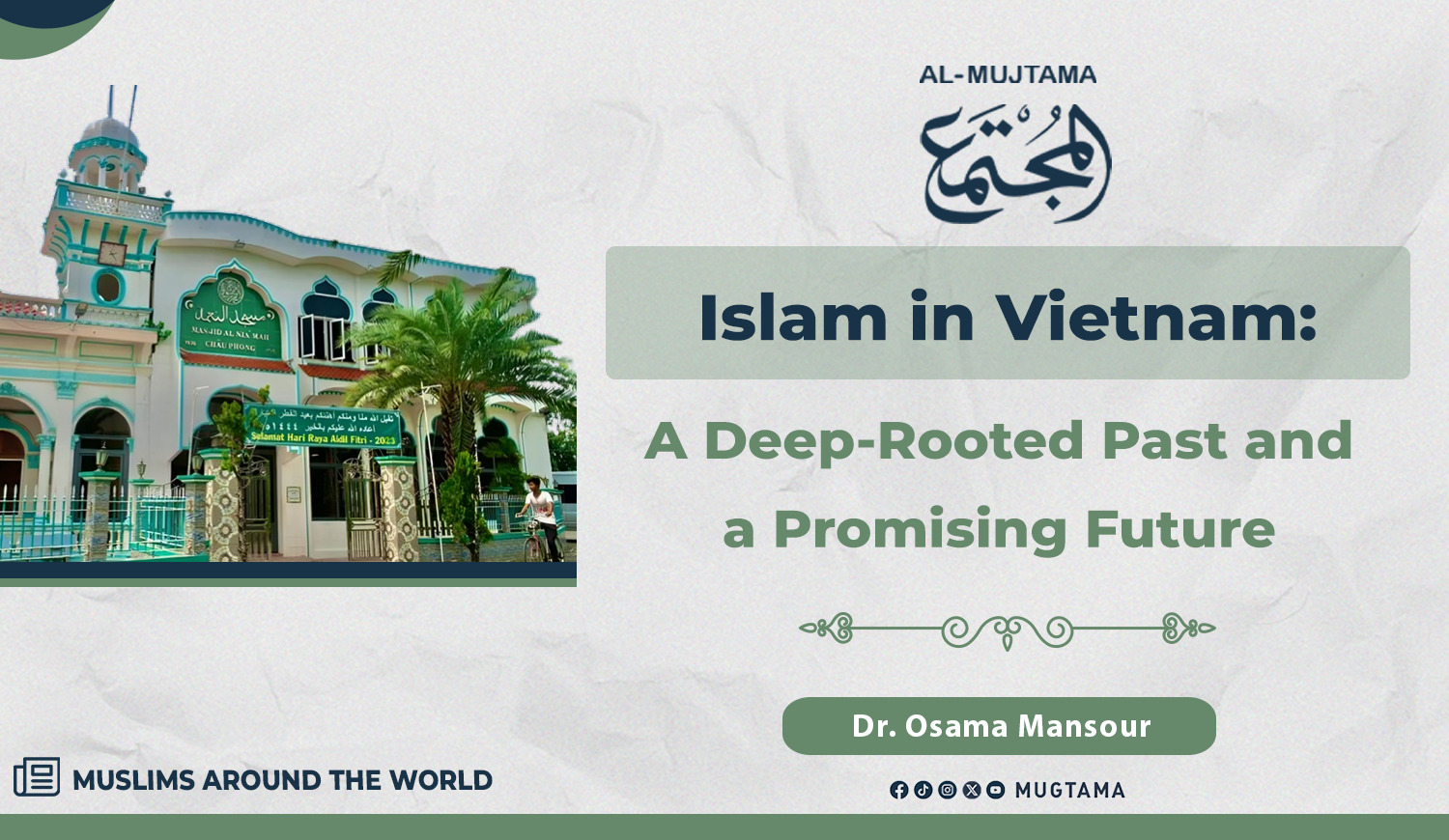
Vietnam,
that distant land that endured the ravages of wars and injustice,
whose people exemplified courage, patience, and resilience in the face
of invaders and occupiers, once held a deep-rooted Islamic presence
with a history of its own. This community suffered, just as the Vietnamese
people did, from oppression and tyranny, until its circumstances
changed, becoming lost in the labyrinths of history. Today, it exists as
a small minority with limited numbers, resources, and institutions.
In this
report, we will explore the history of Islam in Vietnam, its present
state, and look towards its future.
Geographical
and Demographic Context
Vietnam is
located in Southeast Asia, on the Indochinese Peninsula. Its land
is a narrow strip extending from north to south, widening in the north
and narrowing as we move south. Its area is 334,332 square kilometers.
It is bordered to the north by the People's Republic of China, to the
south and east by the South China Sea, and to the west by Laos and
Cambodia. According to the latest census in 2022, its population is
approximately 98 million people.
The
Vietnamese people speak the Vietnamese language, which belongs to the
Mon-Khmer language family of the Indochinese Peninsula. Muslims, however, speak
the Champa language, which is a Malayo-Polynesian language.
Historical
Overview of Vietnam
In the
past, Vietnam was one of the kingdoms of the Indochinese Peninsula. It
was colonized by the French in the 19th century. In 1942, the Japanese
invaded and expelled the French. However, after Japan's defeat in 1945,
the French returned to power. They faced fierce resistance from the
leftist Viet Minh party and its nationalist and communist members.
Consequently, Vietnam was divided into two states, North and South. The United
States entered as another adversary in the conflict that lasted for more
than two decades. The Vietnamese inflicted significant losses on America,
which led to the withdrawal of its forces from Vietnam in 1975, and the
country was unified once again.
Islam's
Arrival and Development in Vietnam
Historians
generally agree that Islam arrived in Vietnam through Arab and Muslim
traders who embarked on their voyages towards the countries of East Asia
from an early period. Vietnam was one of the stops for their ships. Documents
from the Chinese Song Dynasty (907-1271 AD) record that the Cham people
began converting to Islam in the late 10th and early 11th centuries. This
period also witnessed the arrival of Turkish and Persian Muslims in
Vietnam during the Mongol invasions, which contributed to the spread of Islam
in the region.
The areas
inhabited by Muslims expanded until they formed their own kingdom known as the "Kingdom
of Champa" in southern Vietnam. It had a Malay cultural character.
Historians differ on whether the Cham people were originally groups from the
Malay peoples who migrated to this region and founded the Kingdom of Champa, or
if the opposite is true.
The
expansion and spread of the Kingdom of Champa led to resentment and envy
from Buddhists and other inhabitants of Vietnam. This inevitably resulted in a clash
between the two sides, which began in 1407 AD and ended with the fall of
the Kingdom of Champa in 1802 AD. Its last king, Po Chon, fled to Cambodia,
followed by thousands of Cham Muslims, who formed the nucleus of the Muslim
community in Cambodia.
The
Muslim Community Today
The
majority of Muslims today are of "Champa" origin; they are the
indigenous people of South Vietnam. The rest are of Arab, Indian, and
Vietnamese descent. The Vietnamese Muslim community integrated with new
generations resulting from marriages between Vietnamese individuals and Muslim
traders of Arab, Pakistani, Indian, Malaysian, and Indonesian origins, in
addition to new converts to Islam. All of these constitute the components of
the Islamic community in Vietnam.
According
to the official census, the number of Muslims in Vietnam is 90,000 (1%).
They struggled greatly and showed immense patience and perseverance to survive
until their situation stabilized.
Mosques
in Vietnam
Vietnam has
approximately 62 mosques, in addition to some smaller mosques that have
not been counted. Among the most famous are the "Jamia
Al-Muslimin" Mosque in Ho Chi Minh City, a large mosque with a
three-story school where large numbers gather during Eid celebrations; the "Nur
Al-Islam" Mosque; and the "Al-Jami'a" Mosque on Nghia
Binh Trai Street, which was formerly the headquarters of the Ho Chi Minh City
Muslim Association.
An
Giang province
includes a number of well-known mosques, such as the "Mubarak"
Mosque, one of the oldest remaining mosques in Champa, built in 1750 AD and
still standing today. The state recognized it as a national cultural relic in
1989. Another is the "Jamewel Azhar" Mosque, the most famous
mosque of the Cham people in An Giang, a majestic and widely renowned mosque
built in 1959. Before that, it was a simple wooden and thatched structure
dating back to 1700 AD, which underwent a recent renovation in 2012. Then there
is the "Jameel Al-Mu'minin" Mosque in Chau Phong village,
distinguished by its vibrant colors, unlike the other mosques in An Giang which
are predominantly white with blue domes. It spans a large area of land and is
characterized by its numerous corridors, columns, and suspended arches.
The "Al-Ni'mah"
Mosque is one of the oldest mosques in An Giang, built in 1930 AD. It is
located in the Kom Soai village of Chau Phong town, 300 meters from the Chau
Phong town hall. Today, the functions of Al-Ni'mah Mosque are not limited to
worship; it is also a major headquarters for the Muslim community in An
Giang and includes a large Islamic school for the children of Muslims in
the province.
Challenges
and Future Outlook
Sheikh
Qasali Ahmed, the Imam of the "Al-Ni'mah" Mosque and a prominent
Muslim figure in An Giang province, told "Al-Mujtamaa" magazine:
"The origins of Muslims in Vietnam go back to the Champa people. They
preserved their Islam and their ethnic identity for centuries, marrying among
themselves and living within their kingdom. There was rarely any political or
religious contact between them and the Vietnamese people, so much so that the
number of Vietnamese Muslims was very small. This situation continued until the
emergence of strife and conflicts between the two groups, which brought
destruction upon the Cham Muslims, forcing some to flee and leading to the
killing of many. Only a small number remain today."
"Today,
Islam and Muslims have integrated into Vietnamese society and have
become a part of it. Therefore, the number of non-Cham Muslims has become
large. Muslim populations are distributed across villages and provinces in the
southern region of Vietnam, with the vast majority residing in An Giang
province. Muslims own 62 mosques in 8 cities, 17 of which are in Ho Chi Minh
City, the largest economic center."
Ahmed
added: "A large segment of Vietnamese Muslims suffers from poverty.
Islamic institutions are doing their best, and we, the imams, try as much as we
can to collect donations and charity from benefactors and the wealthy and
distribute them to the poor in cities and villages according to their
needs."
Regarding
the challenges facing Islam in Vietnam, he said: "Religious education
remains the fundamental problem for Vietnamese Muslims. Due to the small
number of mosques and religious schools, and the weak economic situation of
many Muslim families, religious education faces a severe shortage of
students. Even those whose circumstances allow them to enroll in religious
schools for some time may not be able to continue their studies beyond one or
more stages. As for students who manage to reach university, some lack
religious awareness due to the absence of institutions and organizations
that care for them. Therefore, they tend to follow the dominant culture in
Vietnam, especially since the role of most mosques is limited to celebrating
religious holidays and occasions."
Sheikh
Ahmed concluded his statement by saying: "Muslims in Vietnam have suffered
for many long years, enduring hardships and difficulties that no human can
bear, until that difficult period passed and is gone forever. They were able to
overcome this ordeal only by the grace of God first, and then by their faith,
their love for their religion, and their steadfastness upon it. Today, they
are proud to be Muslims and to belong to this great Ummah (nation), and
they are keen to teach their children the sciences of religion and raise them
with love for the Book of God and the Sunnah (tradition) of His Messenger,
peace and blessings be upon him."




